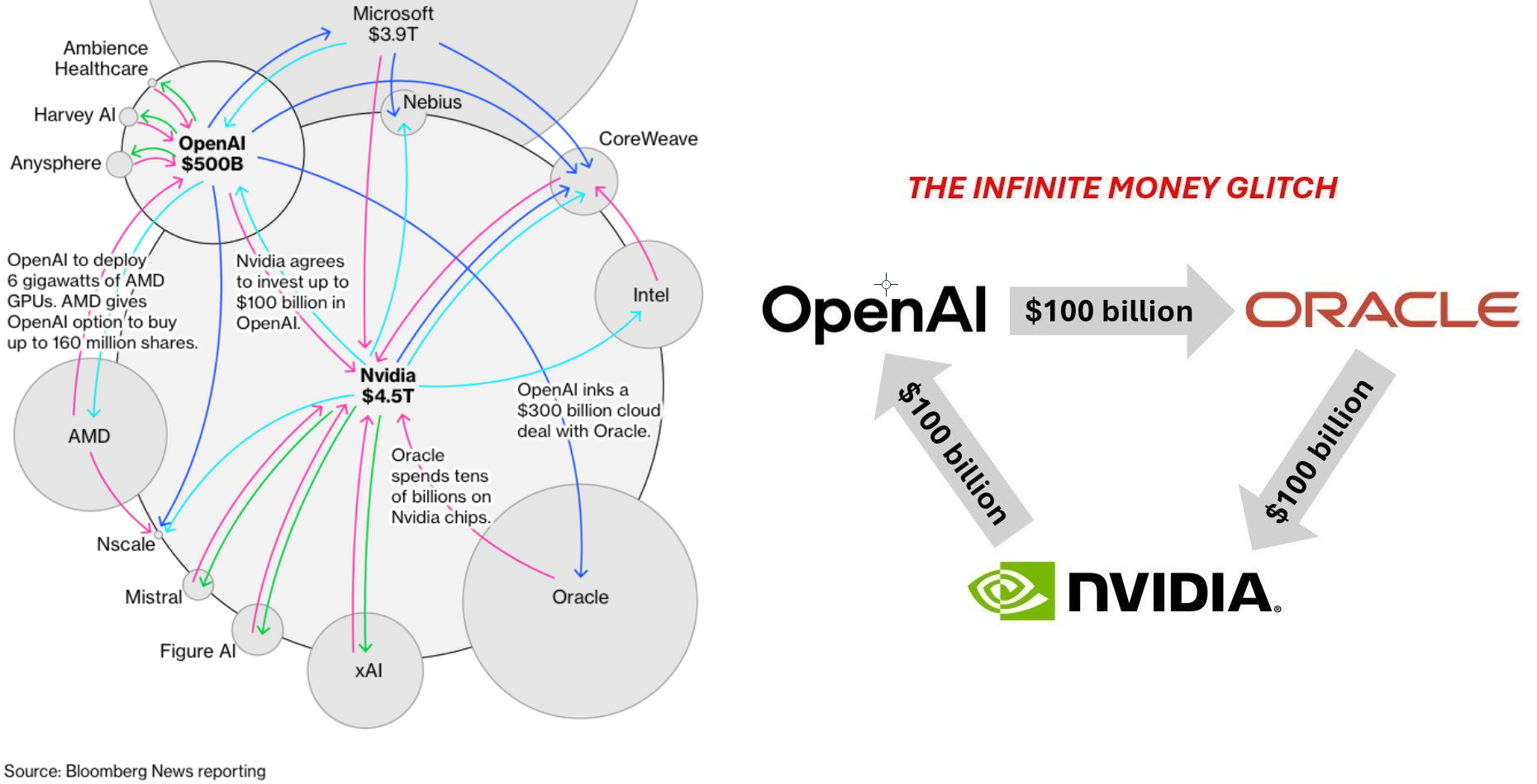AI Investment Could Drag the US into Another Quagmire Like the War on Terror

Yesterday, while browsing Zhihu, I came across a question: “How do you evaluate the view that ‘AI is America’s Urban Investment’?” Under this question, there was an image that has been widely circulated online recently—a network diagram depicting the intricate flow of funds and collaborations among tech giants Nvidia, OpenAI, Microsoft, and Oracle, dubbed the “AI Perpetual Motion Machine.” Some have questioned whether this complete “internal cycle” constitutes a massive asset bubble, comparing AI to “America’s urban investment,” which could eventually collapse.

I thought the analogy in this question was relatively conservative, so I also wrote an answer below. Overall, I believe that in the context of US-China tech competition, America’s current approach to AI is more like digging itself into a ‘second War on Terror’ pit—not only costly with diminishing returns but also severely draining national strength.
The Strategic Cost of the War on Terror
After the 9/11 attacks in 2001, the U.S. launched a global War on Terror, becoming mired in the Middle East for 20 years. According to research from Brown University, the total expenditure of this war exceeded $8 trillion, including military operations, reconstruction, and related costs.
These funds could have been used for U.S. infrastructure, education, or technological R&D but were instead spent on a protracted conflict. The result? The U.S. exhausted immense national strength, saw its debt surge, while China seized this strategic window to rapidly develop its economy and technology. By the time the Obama administration announced the “Pivot to Asia” in 2011, it was already too late. China had transitioned from a manufacturing powerhouse to a tech leader, laying the foundation for today’s competitiveness.
The lesson for the U.S. from this war is that high investment does not equal strategic victory. If the direction is misguided, no amount of money can prevent the waste of resources. The War on Terror was ostensibly for America’s so-called national security, but in reality, it diverted attention and left the country in a passive position.
The AI Boom Is Repeating the War on Terror Script
Today, America’s AI boom is staging a similar scenario.
Data from 2024 shows that U.S. private AI investment reached $109.1 billion, nearly ten times that of China. Entering 2025, giants like Microsoft, Alphabet, Meta, and Amazon announced total capital expenditures of $370 billion, and these figures are growing exponentially—numbers that are no less than waging another global War on Terror.
But where is the vast majority of this money going? The language interaction layer.
I’ve been intensely using various new AI tools almost every day for the past two years, and my personal observation is that their core value lies in solving one problem: language-to-language translation. More precisely, translating human natural language into “machine-understandable language” (such as code, API calls, data tables, vectors, etc.), and then translating programs and machines back into human-understandable language.
This is essentially ‘cleaning up the mess’ from the U.S.-led Third Industrial Revolution: Over the past few decades, programmers worldwide have invented countless “inhuman” programming languages, barring ordinary people from access. Now, AI is “correcting” this, enabling average individuals to command programs and machines using human language.
The problem is, U.S. capital is mostly betting on the first half—using AI to command programs.
Generating more, better, and faster information content directly from human language, whether text, images, videos, or code.
But given the development of IT and the internet over the years, even retired grandmothers can scroll through short videos for 10 hours a day. What’s the use of producing even more “junk data” created by AI?
AI Is a Tool, Not an End Goal
It’s important to emphasize that AI is essentially a tool. Using a tool to produce content clearly means the content is more important to consumers than the tool itself.
Think about it: No matter how much content AI generates, if it lacks originality and depth, why would consumers pay for it?
It’s like having the most advanced hammer—if it’s only used to hammer nails but can’t create anything valuable, it will eventually sit idle.
In the current AI boom, much investment is focused on generative AI, like ChatGPT or image generators, which do improve efficiency. But they are more like “content factories” than revolutionary productivity tools.
More importantly, humans naturally dislike ‘junk data.’
If content is relentlessly produced by AI, even the most bored retired grandmother would have little interest in consuming it. After all, any normal person scrolling through Douyin or WeChat Channels and spotting an AI-generated video would immediately swipe away.
Divergence in US-China AI Tracks
Creating AI products essentially aims to let ordinary people save on learning costs and enjoy the thrill of ‘being the boss’—commanding programs and machines to do work, colloquially known as solving problems “by speaking, not doing.”
But in the real world, U.S. AI investment is mainly focused on the first half, betting on the “boss” and “middle management” segment—getting things done by talking and making slick PPTs.
As for the segment that truly drives productivity progress—how to translate easily produced PPTs into grassroots employee manufacturing and interaction with the real world—the U.S. currently faces significant obstacles in investment direction, motivation, and environment.
This is precisely the area where China is quietly making strides.
China is steadfastly developing its real economy, and in its 15th Five-Year Plan recommendations, it unsurprisingly places manufacturing power at the forefront of its national strategy.
If China successfully navigates the latter half of the path from AI to manufacturing, the U.S. might not just lose a decade this time—it could forfeit its dominance in 21st-century manufacturing altogether.
#ai #us-china competition #tech bubble #war on terror